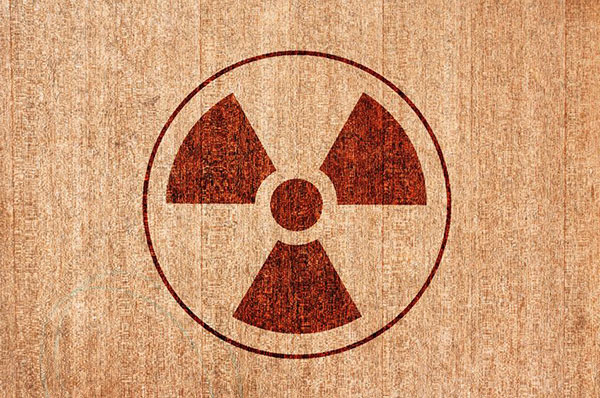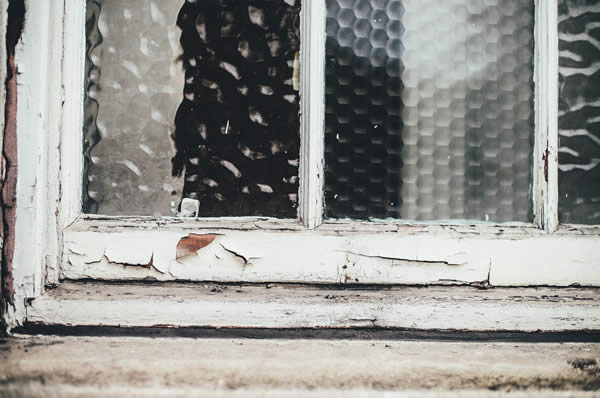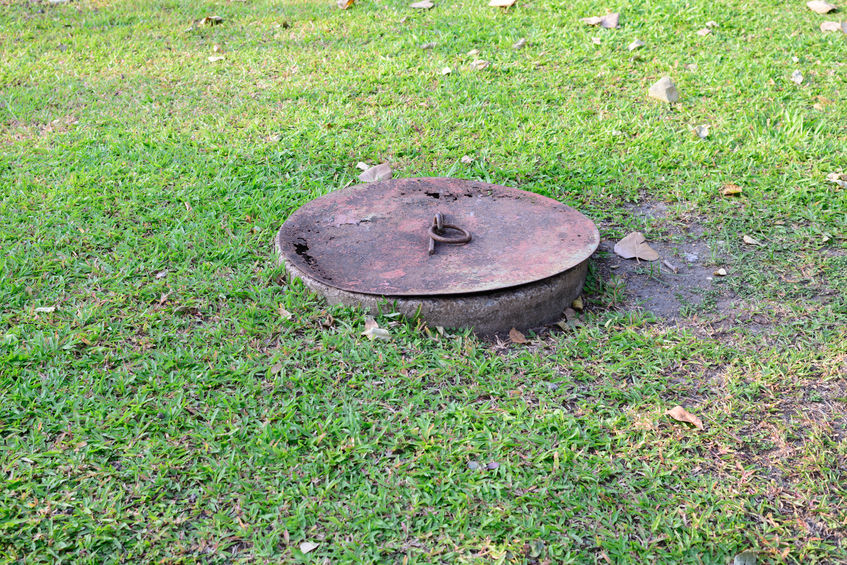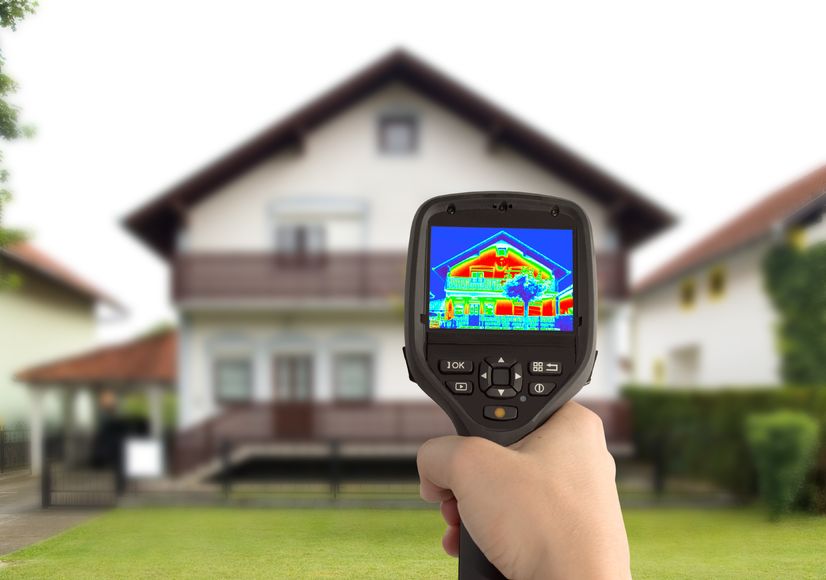Services
A residential home inspection will uncover hidden problems that can be costly or pose a safety hazard to your family. We will perform a complete and thorough home inspection by checking all major areas of the home.

Water Quality Testing
In many areas, mortgage lenders require water quality testing for properties with private wells. Testing a community well may not be required by individual lenders, as this is normally the purview of the municipality. Most lenders will accept a home inspector as an independent tester, who’s required to check for bacteria, including E. coli and coliform. The results for such tests are usually available within 48 hours. Tests for minerals and other contaminants may take weeks to complete.
Public and private water supplies should be tested because they may be affected by the following:
- dangerous levels of bacteria, including E. coli and coliform;
- elevated levels of nitrates and nitrites from fertilizers that leach into the groundwater;
- fluoride levels;
- mineral contaminants, such as iron and arsenic;
- heavy metal contamination, including lead; and
- water hardness.
No natural water source is completely free of impurities; contaminants and pathogens must be monitored and mitigated. With the passage of the Safe Drinking Water Act of 1974, the U.S. Environmental Protection Agency (EPA) set standards that determined the level for the safe consumption of 80 contaminants.
The EPA recommends that a residential water supply be tested annually for bacteria, nitrates, solids, pH levels, and other factors. The frequency of these tests may be increased based on the age of the home’s occupants (infants are particularly susceptible to the effects of lead exposure), whether there are known risks of contamination, or whether any repair or construction work was recently conducted on or around the well or plumbing system. The EPA lists many conditions for whether a water quality test should be performed.
Many state health departments offer lab services for water testing, but these can sometimes be time-consuming and costly for the home inspector and the homeowner. But results are usually reliable. Lab testing also offers a wider range of testing parameters for more types of contaminants.
Water quality testing is practical for both urban and rural areas, where the possibility of contamination is increased by outdated municipal plumbing systems, nearby fracking and other mining activities, livestock farming, and even natural disasters, such as flooding, which can affect the local water table or aquifer. It’s also useful for homeowners who rely on private wells or cisterns for their water supply.

Radon Testing
The EPA recommends:
- If you are buying a home or selling your home, have it tested for radon.
- For a new home, ask if radon-resistant construction features were used and if the home has been tested.
- Fix the home if the radon level is 4 picoCuries per liter (pCi/L) or higher.
- Radon levels less than 4 pCi/L still pose a risk, and in many cases, may be reduced.
- Take steps to prevent device interference when conducting a radon test.
The EPA estimates that radon causes thousands of cancer deaths in the U.S. each year.
* Radon is estimated to cause about 21,000 lung cancer deaths per year.
The numbers of deaths from other causes are taken from the Centers for Disease Control and Prevention’s 1999-2001 National Center for Injury Prevention and Control Report and 2002 National Safety Council Reports.
Radon is a cancer-causing, radioactive gas.
You cannot see, smell or taste radon. But it still may be a problem in your home. When you breathe air containing radon, you increase your risk of getting lung cancer. In fact, the Surgeon General of the United States has warned that radon is the second leading cause of lung cancer in the United States today. If you smoke and your home has high radon levels, your risk of lung cancer is especially high.
You should test for radon.
Testing is the only way to find out your home’s radon levels. The EPA and the Surgeon General recommend testing all homes below the third floor for radon.
Radon has been found in homes all over the U.S.
Radon is a radioactive gas that has been found in homes all over the United States. It comes from the natural breakdown of uranium in soil, rock and water, and gets into the air you breathe. Radon typically moves up through the ground to the air above, and into your home through cracks and other holes in the foundation. Radon can also enter your home through well water. Your home can trap radon inside.
Any home can have a radon problem, including new and old homes, well-sealed and drafty homes, and homes with or without basements. In fact, you and your family are most likely to get your greatest radiation exposure at home. That is where you spend most of your time.
Nearly one out of every 15 homes in the United States is estimated to have an elevated radon level (4 pCi/L or more). Elevated levels of radon gas have been found in homes in your state.

Lead Paint Testing
FACT: Lead exposure can harm young children and babies even before they are born.
FACT: Even children who seem healthy can have high levels of lead in their bodies.
FACT: You can get lead in your body by breathing or swallowing lead dust, or by eating soil or paint chips containing lead.
FACT: You have many options for reducing lead hazards. In most cases, lead-based paint that is in good condition is not a hazard.
FACT: Removing lead-based paint improperly can increase the danger to your family.
Health Effects of Lead
- Childhood lead poisoning remains a major environmental health problem in the U.S.
- Even children who appear healthy can have dangerous levels of lead in their bodies.
- People can get lead in their body if they:
- put their hands or other objects covered with lead dust in their mouths;
- eat paint chips or soil that contains lead; or
- breathe in lead dust, especially during renovations that disturb painted surfaces.
- Lead is even more dangerous to children than adults because:
- babies and young children often put their hands and other objects in their mouths. These objects can have lead dust on them;
- children’s growing bodies can absorb more lead; and
- children’s brains and central nervous systems are more sensitive to the damaging effects of lead.
- If not detected early, children with high levels of lead in their bodies can suffer from:
- damage to the brain and nervous system;
- behavioral and learning problems (such as hyperactivity);
- slowed growth;
- hearing problems; and
- headaches
- Lead is also harmful to adults. Adults can suffer from:
- difficulties during pregnancy;
- other reproductive problems (in both men and women);
- high blood pressure;
- digestive problems;
- nerve disorders;
- memory and concentration problems; and
- muscle and joint pain
Where is Lead Found?
In general, the older your home, the more likely it has lead-based paint.
Paint
Many homes built before 1978 have lead-based paint. The federal government banned lead-based paint from housing in 1978. Some states stopped its use even earlier. Lead can be found:
- in homes in the city, country and suburbs;
- on apartments, single-family homes, and both private and public housing complexes;
- on the interior and exterior of the house;
- in the soil around a home. Soil can pick up lead from exterior paint and other sources, such as past use of leaded gas in cars;
- in household dust. Dust can pick up lead from deteriorating lead-based paint and from soil tracked into a home;
- in drinking water. Your home might have plumbing that uses lead pipes or lead solder. Call your local health department or water supplier to find out about testing your water. You cannot see, smell or taste lead, and boiling your water will not get rid of lead. If you think your plumbing might have lead in it:
- Use only cold water for drinking and cooking.
- Run water for 15 to 30 seconds before drinking it, especially if you have not used your water for a few hours.
- on the job. If you work with lead, you could bring it home on your hands or clothes. Shower and change clothes before coming home. Launder your work clothes separately from the rest of your family’s clothes;
- in old (vintage or antique) painted toys and furniture;
- in food and liquids stored in lead crystal, lead-glazed pottery and porcelain;
- from lead smelters and other industries that release lead into the air;
- with hobbies that use lead, such as making pottery or stained glass, or refinishing furniture.
- in folk remedies that contain lead, such as “greta” and “azarcon” used to treat an upset stomach.

Septic and Sewer Testing and Evaluations
A septic system receives, treats and disposes of unwanted wastewater and solids from a building’s plumbing system. Solids are partially broken down into sludge within a septic tank and are separated from effluent (water) and scum (fat, oil and grease). Effluent regularly exits the tank into a drainfield where it is naturally filtered by bacteria and reentered into the groundwater.
The septic system should be inspected once a year, including as soon as the house is put on the market for sale. This will enhance the home’s value and avoid any liability issues that might result from a malfunctioning system. It is in the interest of a prospective buyer to insist that the septic system be inspected before they purchase the home if it has not been done recently.
What might i look for?
- Find the date that the tank was last pumped. Ultimately, sludge level should determine whether a tank should be pumped, but knowledge of previous pumping dates can be a helpful reference.
- Check the sludge level with a “sludge judge” or a similar device. Sludge accumulates on the tank bottom and should not occupy more than 1/3 of the tank’s total volume or rise to the level of the baffles.
- The septic tank and drainfield should be far from wells and streams.
- Ensure that the system is large enough for the home that it serves. A four-bedroom home, for instance, typically requires a 1,200-gallon tank. The more occupants living in the home, the larger the tank that is required. Capacity in gallons can be calculated by tank dimensions. For rectangular tanks, length x width x depth in feet x 7.5 = capacity in gallons. For round tanks, 3.14 x radius squared x depth in feet x 7.5 = capacity in gallons.
- Check for liquid waste that has made its way to the ground surface. This condition is unsanitary and indicates that the system is overloaded. Make sure that the tank is watertight so that wastewater does not contaminate groundwater, and groundwater does not flow into the tank and cause it to overfill.
- If riser lids are present, they should be inspected for cracks and made sure they are secure.
- Make sure that the baffles are firmly connected to the tank’s inlet and outlet pipes.
- Drain lines should each receive the same amount of wastewater. They can be examined by opening the distribution box. If the box becomes tipped or clogged, it will disproportionately allocate effluent, and potentially flood sections of the drainfield.
Maintenance Tips
Only bath tissue can be flushed down the toilet. Tampons, paper towels, cigarette butts and diapers should be put in the trash. Household chemicals such as gasoline, paint, medication, antifreeze and pesticides can damage bacteria in the septic system and should never be flushed or dumped down the sink. Detergents and bleach can enter the plumbing system in moderate amounts.
- Cars should not be driven on or near the drainfield. Their weight can unknowingly damage subterranean piping.
- Only grass should be planted above the septic tank and drainfield. Roots from trees and large shrubs can cause unseen damage.
- No one should ever dig or build on top of the drainfield.
- All water drainage from rainwater, sump pumps, or any surface water should be diverted away from the drainfield. An over-saturated drainfield can retard the water treatment process and cause plumbing fixtures to back up.
- An easy way to prolong a septic system’s life and prevent a very costly replacement is to fix leaky faucets and toilets immediately. Any household water waste should be avoided. Taking shorter showers and not using a garbage disposal are ways to limit water use.

Thermal Imaging
Infrared (thermal imaging) is an advanced, non-invasive technology that allows the inspector to show homeowners things about their homes that can’t be revealed using conventional inspection methods. An infrared inspection can identify and document moisture intrusion, energy loss, and even unexpected hot spots.
- heat loss and air infiltration in walls, ceilings, floors, windows and doors;
- damaged and/or malfunctioning radiant heating systems;
- air-conditioner compressor leaks;
- under-fastening and/or missing framing members, and other structural defects that can lead to energy loss; and
- broken seals in double-paned windows.
- plumbing leaks;
- hidden roof leaks before they cause serious damage;
- missing, damaged and/or wet insulation; and
- water and moisture intrusion around penetrations and at the foundation and building envelope that could lead to structural damage and mold.
- circuit breakers in need of immediate replacement;
- overloaded and undersized circuits;
- overheated electrical equipment and components; and
- electrical faults before they cause a fire.
- possible pest infestation, as revealed by energy loss through shelter tubes left by boring wood-destroying insects;
- the presence of intruders, such as rats, mice and other larger pests hiding within the structure and detected because of their heat signature that the IR camera captures; and
dangerous flue leaks, which can lead to carbon monoxide poisoning of the home’s residents.

Mold Testing and Inspections
Mold is a byproduct of the breakdown of organic matter, such as plants, wood, and even food and certain beverages. The problem posed to humans by mold is their spores, which can be released into the air and land on damp surfaces indoors, where they will continue to grow, if the conditions are right. Mold growth left unaddressed can quickly spread and result in damage to the structure of a home. More importantly, mold can compromise the respiratory health of susceptible individuals.
A mold inspection starts as a home inspection, which is a non-invasive, visual examination of the home’s interior and exterior, and its various systems and components.
The scope of a mold inspection requires particular knowledge of HVAC systems, roofs, the exterior, and plumbing systems. Musty odors, moisture intrusion via a roof or plumbing leak, or even evidence of suspected mold can warrant a mold inspection.
Once mold gets a foothold, it cannot always be completely eradicated, so the best cure is prevention. Homeowners must be vigilant about checking for leaks both inside and outside, and making sure their home is free of conducive conditions – the main culprit being water. For instance, firewood stacked up against the side of the house can retain moisture from dew, rain and snow. Leaks should be fixed as soon as possible. And indoor humidity and moisture should be controlled by making sure appliances, such as the clothes dryer and dishwasher, are vented properly, and that the vents themselves are operating as they should. Windows are another place prone to mold growth if the frames are old and damaged, or the seals on the panes have failed. And basements and crawlspaces are notorious breeding grounds for mold, especially if they’re used only for storage, the windows are old or damaged, and/or the area experiences occasional flooding.
Mold testing involves two main methods: air sampling and surface sampling. Both types require analysis by a certified laboratory. In some cases, the local health department can test the mold samples. But it’s more common for a private lab to perform the analys
Air sampling is conducted indoors and outdoors using spore traps or canisters. This less-common method is used for homes in areas suspected of having high concentrations of mold spores. The outdoor samples are used to create a control or baseline to determine the level of contamination, and then the control is compared to the indoor samples. When taking the outdoor sample, the home inspector should be alert to environmental conditions that can affect the results, such as wind, rain, snow, and fluctuating temperatures.
Surface sampling is the more common and easiest method for testing for indoor mold.
Here are some methods of surface sampling that can be performed:
- tape sample: This is the most common method of sampling visible mold, as it allows the inspector to collect several samples in different parts of the home quickly. Sampling kits are typically sold by the laboratories that test for mold and send back the results of their analysis.
- swab sample: A cellulose swab with a liquid preservative is used to collect any suspected mold for laboratory testing.
- carpet sample: In rooms where there is carpeting, testing can be performed on vacuumed contents, or even a snip of the carpeting. Typically, carpets that have visible mold or have tested positive for mold should be discarded and replaced, as it’s nearly
- impossible to remove all traces of mold from carpet fibers, where mold will likely continue to grow.

Asbestos
What Is Asbestos?
Asbestos is a mineral fiber that can be positively identified only with a special type of microscope. There are several types of asbestos fibers. In the past, asbestos was added to a variety of products to strengthen them and to provide heat insulation and fire resistance. InterNACHI inspectors can supplement their knowledge with the information offered in this guide.
How Can Asbestos Affect Human Health?
From studies of people who were exposed to asbestos in factories and shipyards, we know that breathing high levels of asbestos fibers can lead to an increased risk of lung cancer in the forms of mesothelioma, which is a cancer of the lining of the chest and the abdominal cavity, and asbestosis, in which the lungs become scarred with fibrous tissue.
The risk of lung cancer and mesothelioma increase with the number of fibers inhaled. The risk of lung cancer from inhaling asbestos fibers is also greater if you smoke. People who get asbestosis have usually been exposed to high levels of asbestos for a long time. The symptoms of these diseases do not usually appear until about 20 to 30 years after the first exposure to asbestos.
Most people exposed to small amounts of asbestos, as we all are in our daily lives, do not develop these health problems. However, if disturbed, asbestos material may release asbestos fibers, which can be inhaled into the lungs. The fibers can remain there for a long time, increasing the risk of disease. Asbestos material that would crumble easily if handled, or that has been sawed, scraped, or sanded into a powder, is more likely to create a health hazard.
Where Would Asbestos Be Found, and When Can it Be a Problem?
Most products made today do not contain asbestos. Those few products made which still contain asbestos that could be inhaled are required to be labeled as such. However, until the 1970s, many types of building products and insulation materials used in homes contained asbestos.
Where Asbestos Hazards May Be Found in a Home
- Some roofing and siding shingles are made of asbestos cement.
- Houses built between 1930 and 1950 may have asbestos as insulation.
- Asbestos may be present in textured paint and in patching compounds used on wall and ceiling joints. Their use was banned in 1977.
- Artificial ashes and embers sold for use in gas-fired fireplaces may contain asbestos.
- Older products, such as stove-top pads, may have some asbestos compounds.
- Walls and floors around wood-burning stoves may be protected with asbestos paper, millboard or cement sheets.
- Asbestos is found in some vinyl floor tiles and the backing on vinyl sheet flooring and adhesives.
- Hot water and steam pipes in older houses may be coated with an asbestos material or covered with an asbestos blanket or tape.
Oil and coal furnaces and door gaskets may have asbestos insulation.

Time of Transfer
Central Michigan District Health Department Time of Transfer (TOT) FAQs
What is the TOT program?
The TOT is a regulation of the Central Michigan District Health Department (CMDHD) Sanitary Code. It states that properties in Isabella County with onsite wells and/or onsite sewage treatment systems need to be evaluated when the property is sold or transferred to a new owner. These evaluations are done to make sure that wells and septic systems are working properly and do not require important maintenance.
Why is TOT necessary?
The purpose of the TOT program is to protect the health of our community, the quality of our water resources, and the natural environment. Through this program, the current condition and operation of wells and septic systems are evaluated. Wells or septic systems that are a potential public health or environmental health danger or that need maintenance are improved.
What are the first steps in selling my property with a well and/or septic system?
When you know that your property with a well and/or septic system is going to be sold or transferred to a new owner, determine what your situation is. The requirement for TOT evaluation may be different depending on the kind of sale or transfer. Most property transfers with a home or business that are not on municipal sewer and water will require an evaluation. For more information, please log onto our website at www.cmdhd.org, or call us at 989-773-5921, extension 3.
What are the exemptions to this regulation?
- Transfer from a spouse.
- Change in ownership solely to exclude a spouse.
- Transfer to effect foreclosure or forfeiture of real property. When the property is taken back by the bank, it is exempt. When the bank sells the property to another entity, it is not exempt from this Regulation.
- Transfer by redemption from a tax sale.
- Transfer creating or ending joint ownership if at least one person is an original owner of the property or his or her spouse.
- Transfer to establish or release a security interest.
- Premises built within the previous twenty-four months prior to date of property transfer and has an onsite sewage system and water well approved by CMDHD.
- Premises evaluated under this ordinance within the previous twenty-four months prior to date of property transfer and has an onsite sewage system and water well approved by CMDHD.
- Premises that shall be demolished and shall not be occupied after the property transfer.
- New homes that have not been occupied and has an onsite sewage system and water well approved by CMDHD..
- If as a condition of sale or transfer, and upon written demonstration to the Health Department, the structure is to be connected to an available public sanitary sewer and/or public water supply within six months of the sale or transfer.
- Transfer of vacant property.
Must all systems be brought up to current standards?
No. The Regulation clearly states that it is not intended to bring all systems up to current construction standards. Only those that are failing or in substantial non-conformance require corrective action.
Does this program delay home sales?
The program requires a completed inspection report be submitted for review within 5 business days after water sample results have been received. This does not delay closings when the inspections are done in a timely manner. Scheduling an inspection may take a week depending on day of the week and previously scheduled inspections. Some sales are delayed when the inspection is done after an offer is tendered. This is particularly true if corrections are necessary. Since inspection results are good for 24 months, homeowners are encouraged to start the process when listing the home.
How can I sell a house before repairs are completed?
The CMDHD will approve the property transfer if the following is submitted to and approved: Corrective action plan (which may be a permit to replace an existing system). Proof of a contract to complete the work. Evidence of an escrow account that covers 1.5 times the cost of the required repairs.
How are these inspections accomplished?
Homeowners contact a certified inspector or CMDHD to conduct these evaluations. A standardized inspection procedure is used and reports are submitted on a standardized form.
What does this program cost?
Certified inspectors charge their own rates for services. A review fee is charged by CMDHD when a completed report is submitted. See CMDHD current fee schedule.
When can I expect the results?
The CMDHD is committed to processing all submittals in a fair and timely manner. Requests will be scheduled in the order they are received. The CMDHD will send the owner an authorization to transfer or contact the owner about necessary corrections in no more than 5 business days of receiving completed inspection reports. Additional Questions? Call 989-773-5921 Ext 3.

Complete Commercial inspections
Many commercial properties are not inspected. By having a complete inspection, you will be aware of things you may have to fix, repair, or replace before you buy commercial property.
